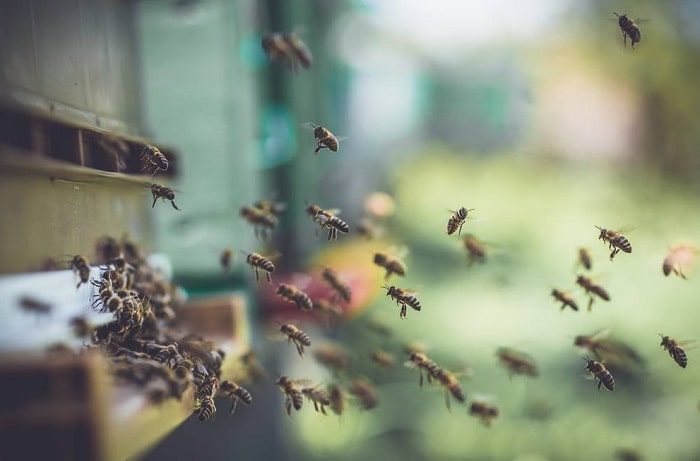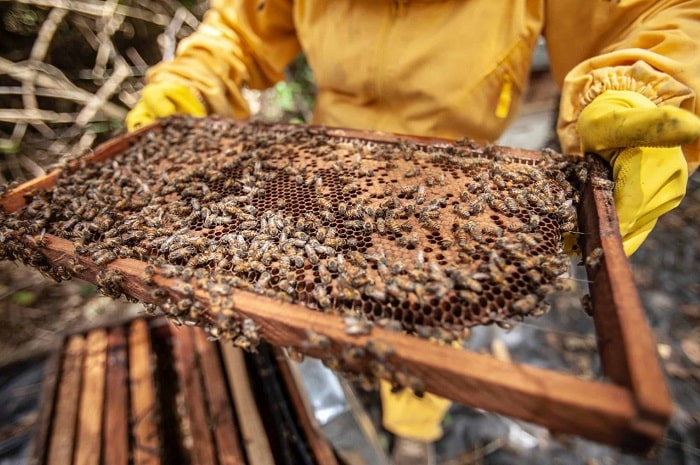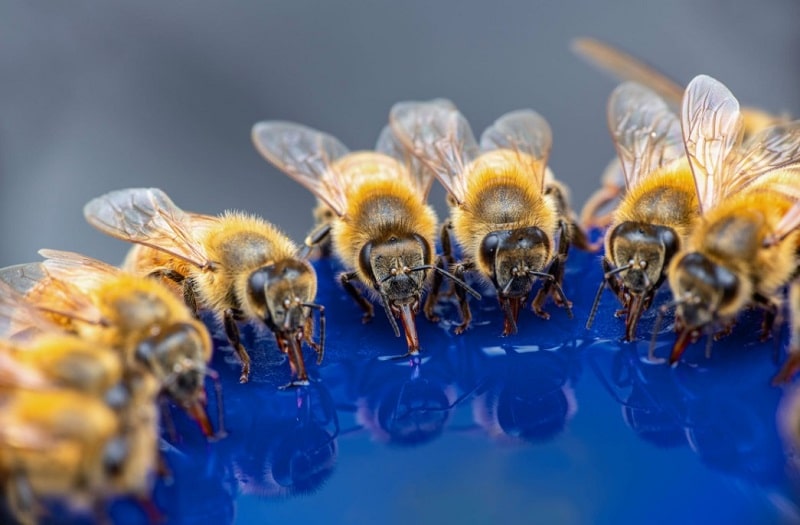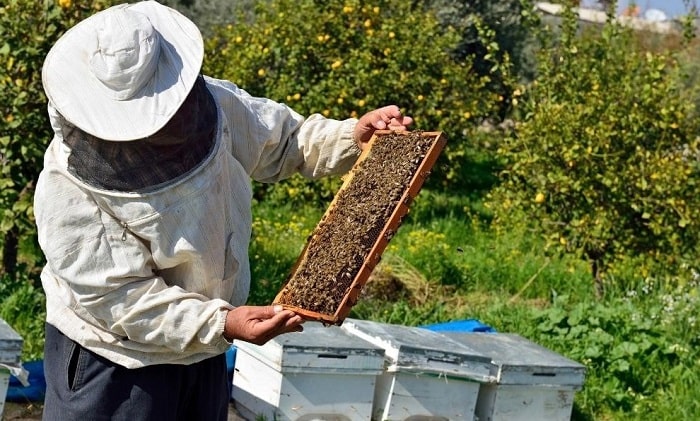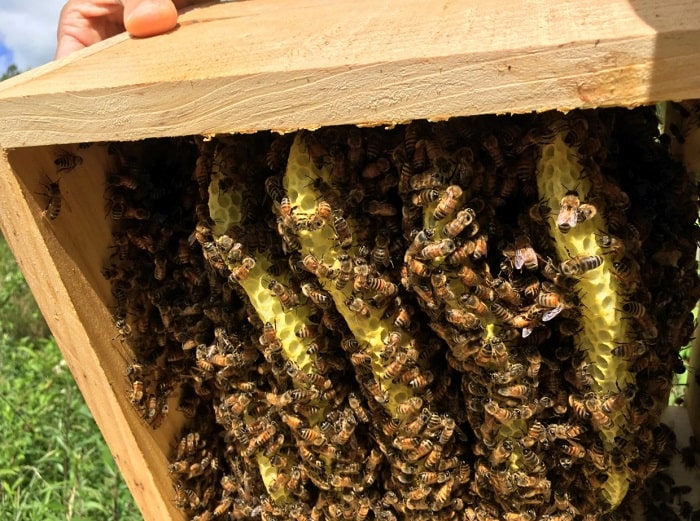One of the oldest human hobbies is collecting honey from bee colonies. Honey is regarded as a valuable commodity in the world. As technology became more involved in beekeeping, new methods and equipment emerged. Honey strainers are absolutely necessary parts of beekeeping equipment. This article discusses the best honey strainers for beekeeping on the market. They come in a variety of sizes and patterns, but they all serve the same purpose: to filter and remove contaminants from honey.
Why filter honey
Straining honey is a personal choice among beekeepers, and it is heavily influenced by your market. Some purchasers prefer to see particles floating in their honey to guarantee that it is fresh from the hive. Other buyers may be turned off by the presence of particles in their honey and will shop elsewhere as a result of the presentation.
There is no need to buy an extractor if you simply want to extract honey from one or two frames of honey at a time. This can be an expensive purchase with little return. Instead, remove the comb from the frames, set it in a large bowl or bucket, and smash it with a wooden spoon or potato masher until it’s small enough to strain. Straining honey is a simple task that might help you make and save money in these situations.
How do you strain honey?
Here are some instructions for straining honey:
- Extract the honey
You must have extracted honey to work with in order to strain it. If you have an extractor and enough honey frames to justify utilizing it, use it to separate the honey from the comb. If you’re simply working with a few frames, apply the crush and strain method.
- The honey and strainer come together
Fill the strainer halfway with honey. If you employed the crush and strain method, the substance should have been progressively poured into the strainer. This is what you should aim for when straining to avoid clogs. To ensure that the honey is correctly filtered, remove any large chunks of comb from the strainer.
- The waiting period
After you have filtered all the honey, store it in a covered bucket. To prevent particles or insects from getting into your freshly strained honey, make sure the bucket is securely closed with a lid. Allow the honey to rest at room temperature for three days. This allows any air bubbles in the honey to rise to the surface before bottling.
- Bottle and skim
When the three days are up, unscrew the bucket’s lid. If there were air bubbles in the honey, they would be visible on top. Skim the air bubbles from the top of the honey like you would the cream from the top of milk. When it has been extracted, the product should be bottled and stored until use or sale.
Reviews of the Best Honey Strainers
1. VIVO Stainless Steel Double Sieve Honey Strainer
This is VIVO’s newest honey strainer, which has a double sieve to thoroughly filter out contaminants from the honey. The repeated straining procedure ensures that the filtering is as smooth as possible. The VIVO BEE-V101H Honey Strainer has two independent screens for effective filtration. It is made of 304 stainless steel, which is oxidation and rust resistant, long-lasting, and simple to clean. Aside from these characteristics, the VIVO BEE-V101H Honey Strainer’s key selling point is its ease of use.
This strainer is covered by a one-year warranty. It removes the risk of acquiring the goods, and the manufacturer pledges to stand by their product if you are unhappy with it or have any problems during the first year.
Pros
- Easy to clean
- Quality mesh in the sieve
- Does a good job filtering; no additional filtering products or honey restraint should be required before bottling.
Cons
- The use of a double sieve can make it harder for gravity to pull the honey through to strain.
2. Mann Lake HH440 Stainless Steel Honey Strainer
The Mann Lake Honey Strainer has a double sieve design as well. This design is effective for extracting large and small contaminants from raw honey. This honey strainer is noted for its lightweight design, which is advantageous while straining honey. The strainer also includes a handle that can be adjusted. This is a fantastic addition because it has shown to improve the strainer’s fit on a bucket. However, it also helps it fit on other containers.
Pros
- Lightweight
- Double sieve design
- Adjustable handle which makes the strainer an easier fit over different sized containers
Cons
- There have been reports of shipping and packaging difficulties.
3. Fasmov Stainless Steel Double Sieve Honey Strainer
The Fasmov Honey Strainer can be a good choice for a beginner beekeeper. The strainer has been designed to suit most food-grade buckets uniformly. It also includes adjustable arms for suspending the strainer above the bucket. Despite the fact that this honey strainer has a twin sieve design, the two screens may be divided into two independent parts. This is ideal if you only want to separate large bits of honeycomb from the honey because you can use the sieve with the larger mesh. If you want to fine-sift your honey, use the sieve with smaller pores. The best thing about the strainer separating is that it makes cleaning easy.
Pros
- Most buckets and containers are universally compatible.
- Adjustable arms keep the strainer suspended over most containers and allow for simple installation.
- Dishwasher-safe item
Cons
- Mesh is a delicate material and not wide enough to cover the opening of every container
4. Goodland Bee Supply Food Grade 304 Double Sieve Honey Strainer
The Goodland Bee Supply double sieve strainer is an essential piece of equipment for beekeepers. It is also an excellent tool for those working in the food business who process honey and syrup. It comes with a 10-inch basket that is 5 inches tall. This strainer’s extensible arms allow it to easily fit over a 5-gallon container or bucket. It can be extended to a length of 16 inches, making it one of the most adaptable strainers on the market. This honey strainer is made of 304 food grade stainless steel, which is strong and resistant to oxidation and rust.
Pros
- Fits most five-gallon buckets
- Has a double sieve design to eliminate bigger debris and smaller contaminants before bottling.
- Lightweight product that makes the beekeeper’s straining procedure easier.
Cons
- If stainless steel is not properly dried or kept, it might rust.
5. Blisstime Honey Harvesting Starter Kit
A double sieve honey strainer is included in the Blisstime Honey Harvesting Starter Kit. The strainer is nine inches in diameter and deeper than most other honey strainers on the market. This is thought to speed up the straining process. A frame holder, an uncapping fork, and a honey gate are all included in the set. These items are required to transport your honey from the frame to the jar. They are built of robust materials such as stainless steel and are intended to last a long time.
Pros
- Great value and convenient for new beekeepers
- Deeper strainer may help the process go faster
- Constructed from durable products such as stainless steel
Cons
- Because the strainer has a smaller diameter, wax may bypass the straining process, requiring the honey to be refiltered.
6. Mr. Garden Novo Stainless Steel Double Sieve Honey Strainer
Mr. Garden Novo Double Sieve Stainless Steel Strainer is exactly what you will need to process clean honey. It is quite simple to use: simply lay it over a bucket, pour honey into it, and leave it for a few minutes. Mr. Garden Novo Stainless Steel Double Sieve Strainer is made of stainless steel, which is resistant to corrosion and rust. It is also simple to clean. Impurities and foreign items are captured on the double mesh arrangement during filtering honey. This enables for a seamless procedure that results in a consistently clean and light-colored liquid.
Pros
- Pretty light and easy to use
- Made of stainless steel, which is resistant to corrosion and rust
Cons
- If stainless steel is not properly dried or kept, it might rust.
7. Navadeal Stainless Steel Double Honey Filter Strainer
While you wait for the honey to be thoroughly filtered, you can do other things with the Navadeal Stainless Steel Double Honey Strainer. Simply place this strainer in a bucket and leave it till it is finished. This strainer is made of stainless steel, which is long-lasting and resistant to corrosion and rust. It’s also simple to clean; simply toss it in the dishwasher and you’re done. The arms will fit securely around the bucket, providing stability while filtering. The use of two sieves ensures that your honey is free of dirt and other impurities.
Pros
- Gives you the ability to work on other activities
- Made of stainless steel
- It only weighs 1.94 pounds so it’s not a hassle carrying it around.
- Easy to clean
Cons
- If stainless steel is not properly dried or kept, it might rust.
8. Dusichin DUS-121 Stainless Steel Double Sieve Honey Strainer
This inexpensive double sieve honey strainer is well worth the money. It works really effectively, as many veteran beekeepers have demonstrated. It is so simple and effective that purifying honey no longer takes up a lot of your valuable time. The DUSICHIN DUS-121 Stainless Steel Honey Strainer is composed of 304 food quality stainless steel, which is oxidation and corrosion resistant, long-lasting, and simple to clean. The top screen has a coarse mesh that quickly filters big contaminants, while the lower screen has a finer mesh that separates even the smallest particle from the honey.
Pros
- Composed of 304 food quality stainless steel
- Long-lasting, and simple to clean
- This is the cheapest but most effective device
Cons
- If stainless steel is not properly dried or kept, it might rust.
Conclusion
Here are the top honey strainers available on the market. Despite differences in manufacturer, these amazing items have one thing in common that is required in beekeeping today: Convenience. Beekeeping is already time-consuming, so a little extra ease guarantees a more delightful time with the bees.







